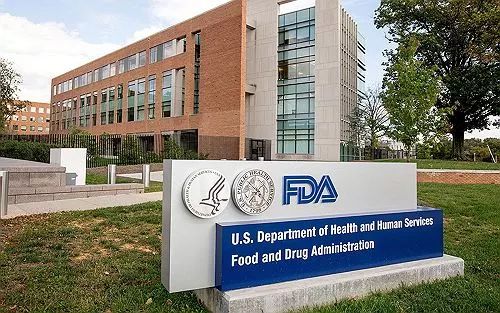OLABS ∨
解决方案 ∨

本周二(3月12日),美国食品药品监督管理局(FDA)公布了四份关于癌症临床试验资格标准的指南草案,以及一份关于将青少年纳入成年肿瘤学试验的最终指南。这在一定程度上推动了临床试验资格标准的转变,这些临床试验资格标准随着时间的推移而被人所接受,但却没有明确的科学或临床依据。
美国FDA根据美国临床肿瘤学会(ASCO)和“癌症研究之友”(Friends of Cancer Research)的意见,制定了上述四份关于癌症临床试验资格标准的指南草案。这四份指南草案重点关注:儿科患者的最低年龄;HIV艾滋病毒、乙型肝炎病毒或丙型肝炎病毒感染患者;患有器官功能障碍或既往患有或同时患有恶性肿瘤的患者;以及脑转移患者。
美国FDA局长Scott Gottlieb 表示:“过于严格的资格标准可能会妨碍受试者入组,限制患者进行临床试验,并导致试验结果不能完全代表最终接受药物治疗的患者群体的治疗效果。”他指出这些指南草案为扩大癌症试验资格标准提供了新的建议。
▍儿科患者最低年龄
这份七页的指南草案阐述了寻求将儿科患者纳入成人癌症试验的申办方应如何根据儿科患者的年龄、体型、生理状况和治疗需求对儿科剂型进行评估。
该草案给出了支持将2岁以上12岁以下患者纳入临床试验的临床证据类型,并明确指出,由于受发育问题的影响,同时代谢酶系统和器官功能的成熟过程与年龄大小迫切相关,2岁以下儿童可能特别容易受到预期和意外毒性的影响,因此不应将2岁以下儿童纳入成人癌症试验。在极少数情况下,新生儿期(即个体出生后第一个月,严格讲为28天)以后的婴儿可能是试验药物治疗的合适人选。但是,将2岁以下儿童的纳入临床试验最好仅限于特殊情况,并且仅限于与FDA协商之后。
此外,该草案还提出了,在对人数足够多的成年患者进行评估并能够提供足够的安全性和毒性数据的情况下,将儿童患者纳入早期试验的潜在方法。
对于后期试验,该草案表示,后期试验中规定的最低合格年龄应根据所研究疾病的生物学特性、试验的科学目标以及有关药物作用机制和安全性的现有数据进行调整。
▍HIV艾滋病毒、乙型肝炎病毒或丙型肝炎病毒感染患者
这份八页的指南草案解释了,在许多情况下,扩大癌症临床试验的资格标准,以便进一步纳入HIV艾滋病毒、乙型肝炎病毒或丙型肝炎病毒感染患者是合理的,并可能加快开发出可以有效治疗这些慢性感染癌症的方法。
该草案中关于癌症和艾滋病毒感染并发患者资格标准的建议侧重于对免疫功能加以评估,并对HIV艾滋病毒实施治疗,而对于有慢性乙型肝炎患病迹象或目前患有或既往有丙型肝炎病史的癌症患者的建议则侧重于肝脏相关实验室和乙型肝炎病毒/丙型肝炎病毒治疗。
▍患有器官功能障碍或既往患有或同时患有恶性肿瘤的患者
这份六页的指南草案不仅为既往患有或同时患有第二原发性恶性肿瘤病史的癌症患者提供了资格标准建议,还为癌症临床试验中器官功能障碍患者的资格标准提供了建议,其重点关注的是肾功能、心功能和肝功能。
FDA解释说:“通过将患有严重器官功能障碍或既往患有或同时患有癌症的患者排除在癌症临床试验之外,试验更倾向于招募年轻患者,而年轻患者可能不能完全代表将要接受该药物治疗的人群。”
“例如,针对初始剂量研究或初步活动评估或概念验证研究,不应排除既往患有或同时患有第二原发性恶性肿瘤的患者,”该草案中指出。
▍脑转移患者
在美国,大约有7万名癌症患者被诊断出患有脑转移,而这份六页的指南草案解释了如何将这些患者纳入临床试验,以便在可以确保患者安全的同时更好地了解试验药物的有效性和安全性。
该指南表示,某些恶性肿瘤患者(如黑色素瘤患者、肺癌患者和乳腺癌患者)的脑转移发病率正在上升。然而,由于担心脑转移患者可能出现功能状态不佳、预期寿命缩短或毒性风险增加的情况,这类患者历来被排除在临床试验之外。“
同时,该指南草案还解释了如何将癌症(从其他地方)转移到大脑的癌症患者纳入早期试验中,此时要么纳入单独的队列研究中,要么根据方案计划纳入具有子集分析的队列研究中,以评估脑转移患者的初步疗效和毒性。如果有充分理由表明要将某些脑转移患者从临床试验中排除出去,则应在临床试验方案中对排除理由加以说明。”
▍将青少年患者纳入成人肿瘤学临床试验
这份四页的最终指南为招募青少年患者参加成人肿瘤学试验提供了适当的纳入标准、剂量和药物代谢动力学(简称药代动力学)评估、安全性监测和伦理要求等方面的建议。
FDA表示,在获得初始成人药代动力学和毒性数据后,青少年应仅限于参加首次人体试验(first-in-human trials, FIH)或剂量递增试验(dose-escalation trials)。FDA还表示,只有患有复发或难治性癌症的青少年患者,或者所患癌症缺乏有疗效的标准治疗的青少年患者,才应参加早期试验。
至于指南草案与最终指南之间的差异,FDA表示:“我们就收到的所有关于指南草案的公众意见进行了审议,并已做出适当修订。”
FDA Unveils 5 Guidances on Broadening Cancer Clinical Trial Eligibility
As part of a push to transform clinical trial eligibility criteria that have been accepted over time without a clear scientific or clinical rationale, the US Food and Drug Administration (FDA) on Tuesday published four draft guidance documents on cancer clinical trial eligibility criteria and one final guidance on including adolescents in adult oncology trials.
The four drafts, developed by FDA with input from the American Society of Clinical Oncology and Friends of Cancer Research, focus on minimum age for pediatric patients; patients with HIV, hepatitis B or C viruses; patients with organ dysfunction or prior or current malignancies; and patients with brain metastases.
“Overly restrictive eligibility criteria may slow patient accrual, limit patients’ access to clinical trials and lead to trial results that don’t fully represent treatment effects in the patient population that will ultimately receive the drug,” FDA Commissioner Scott Gottlieb said, noting how the draft guidances offer new recommendations for broadening cancer trial eligibility criteria.
▍Minimum Age for Pediatric Patients
This seven-page draft guidance explains how sponsors seeking to include pediatric patient populations in adult cancer trials should evaluate pediatric formulations, taking into account the age, size, physiologic condition and the treatment needs of pediatric patients.
The draft notes the types of evidence that could support inclusion of patients from two years of age to under age twelve, clarifying that children under the age of two “may be particularly vulnerable to expected and unanticipated toxicity due to developmental concerns and age-dependent maturation of metabolic enzyme systems and organ function, children < 2 years should not be included in adult cancer trials. In rare instances, infants beyond the neonatal period may be appropriate candidates for select new drugs. However, enrollment of children < 2 years of age is best reserved for exceptional cases and only after consultation with the FDA.”
In addition, the draft features potential ways to include pediatric patients in early phase trials after a sufficient number of adult patients have been evaluated to provide adequate safety and toxicity data.
For late-phase trials, the draft says: “The minimum age of eligibility specified in late-phase trials should be tailored to the biology of the disease under study, the scientific objectives of the trial, and the existing data regarding the mechanism of action and safety profile of the drug.”
▍Patients with HIV, Hepatitis B Virus or Hepatitis C Virus Infections
This eight-page draft guidance explains how expanding cancer clinical trial eligibility to be more inclusive of patients with HIV, HBV, or HCV infections “is justified in many cases, and may accelerate the development of effective therapies in cancer patients with these chronic infections.”
The recommendations in the draft for eligibility criteria for patients with cancer and concurrent HIV infection “are focused on evaluation of immune function and HIV therapy,” while the recommendations for those “with cancer who have evidence of chronic HBV or with current or history of HCV are focused on liver-related laboratories and HBV/HCV therapy.”
▍Organ Dysfunction or Prior or Concurrent Malignancies
This six-page draft guidance features recommendations for eligibility criteria for patients with organ dysfunction in cancer clinical trials, focusing on renal function, cardiac function and hepatic function, in addition to recommendations for eligibility criteria for patients with cancer who have a history of prior or concurrent second primary malignancies.
“By excluding individuals from cancer clinical trials who have major organ dysfunction or previous or concurrent cancers, trial recruitment favors younger patients, which may not be fully representative of the population for whom the drug will be indicated,” FDA explains.
“For example, in initial dose finding or preliminary activity-estimating or proof-of-concept studies, patients with a history of prior or concurrent second primary malignancies should not be excluded,” the draft says.
▍Brain Metastases
As about 70,000 patients living with cancer in the US are diagnosed with brain metastases, this six-page draft guidance explains how such patients should be included in clinical trials to create a better understanding of the efficacy and safety profile of the investigational drug while maintaining patient safety.
“The incidence of brain metastases is increasing in patients with certain malignancies such as melanoma, lung cancer, and breast cancer. However, patients with brain metastases have historically been excluded from clinical trials due to concerns of poor functional status, shortened life expectancy, or increased risk of toxicity,” the guidance says.
It also explains how patients with cancers that metastasize to the brain should be included in early phase trials “either in separate cohorts or in cohorts with planned subset analyses to assess preliminary efficacy and toxicity in patients with brain metastases. In cases where there is a strong rationale for exclusion, the rationale should be described in the trial protocol.”
▍Including Adolescent Patients in Adult Oncology Clinical Trials
This four-page final guidance provides recommendations for the appropriate inclusion criteria, dosing and pharmacokinetic (PK) evaluations, safety monitoring, and ethical requirements for enrolling adolescent patients in adult oncology trials.
FDA says that adolescents should only be enrolled in first-in-human or dose-escalation trials after initial adult PK and toxicity data are obtained. The agency also says that adolescent patients should only be enrolled in early phase trials when they have relapsed or refractory cancer, or a cancer with no curative standard treatment available.
As far as changes between the draft and final, FDA said: “All the public comments received on the draft guidance have been considered and the guidance has been revised as appropriate.”
来源:RAPS
原文链接:https://www.raps.org/news-and-articles/news-articles/2019/3/fda-unveils-5-guidances-on-broadening-cancer-clini
整理翻译:奥咨达
奥咨达翻译团队根植于中国,面向全球,专注为医疗器械领域的企业提供专业、高效的翻译解决方案。翻译领域包括医疗器械的研发、注册、临床、上市后监督、营销、管理、培训等,译稿已涵盖医疗器械领域的所有类型。
奥咨达翻译组联系方式:
邮箱:trans@osmundacn.com
如果你有寻找医疗器械孵化,
那就与我们取得联系吧!
您可以填写右边的表格,让我们了解您的服务需求,这是一个良好的开始,我们将会尽快与你取得联系。当然也欢迎您给我们写信或是打电话,让我们听到你的声音!
24小时免费咨询热线:
400-6768632
您想参观OLABS创新工厂,
那就与我们取得联系吧!
您可以填写右边的表格,让我们了解您的服务需求,这是一个良好的开始,我们将会尽快与你取得联系。当然也欢迎您给我们写信或是打电话,让我们听到你的声音!
24小时免费咨询热线:
400-6768632